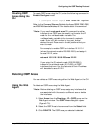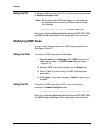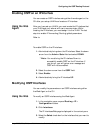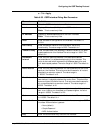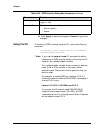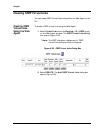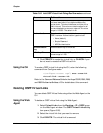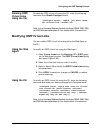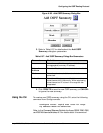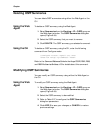
Avaya P550R, P580, P880, and P882 Multiservice Switch User Guide, Version 5.3.1 11-13
Configuring the OSPF Routing Protocol
OSPF Passive-Interface
You can prevent OSPF from sending routing updates across the
network by using the OSPF passive-interface command. Enabling
this command prevents OSPF from sending hello packets across the
network. Any OSPF hello packets received from other OSPF routers
on the network are also ignored. OSPF advertises the passive-
interface as a stub network in the router updates it sends to other
OSPF interfaces.
You can set OSPF passive-interface using either the Web Agent or
the CLI.
Using the Web You can set OSPF passive-interface from the OSPF Interface web
page. The Interface-State field on the OSPF Interface web page can
be set to Passive, which disables the sending of OSPF routing
updates. Normal, which enables the sending of OSPF routing
updates, is the default.
Using the CLI You can set OSPF Passive Interface from the CLI using the
commands:
This command defines an OSPF interface as passive-interface.
>passive-interface [<interface-name>|
<ip-addr>]
This command sets the state of an OSPF interface that is configured
as a passive-interface to normal.
>no passive-interface [<interface-name>|
<ip-addr>]
Refer to the Command Reference Guide for the Avaya P550R, P580, P880,
and P882 Multiservice Switches, v5.3 for details about this command.
Using the CLI To modify an OSPF interface using the CLI, enter the following
command from Configure/Interface mode:
(config-if: <interface>) ip ospf <options>
Refer to the Command Reference Guide for the Avaya P550R, P580, P880,
and P882 Multiservice Switches, v5.3 for details about this command.





